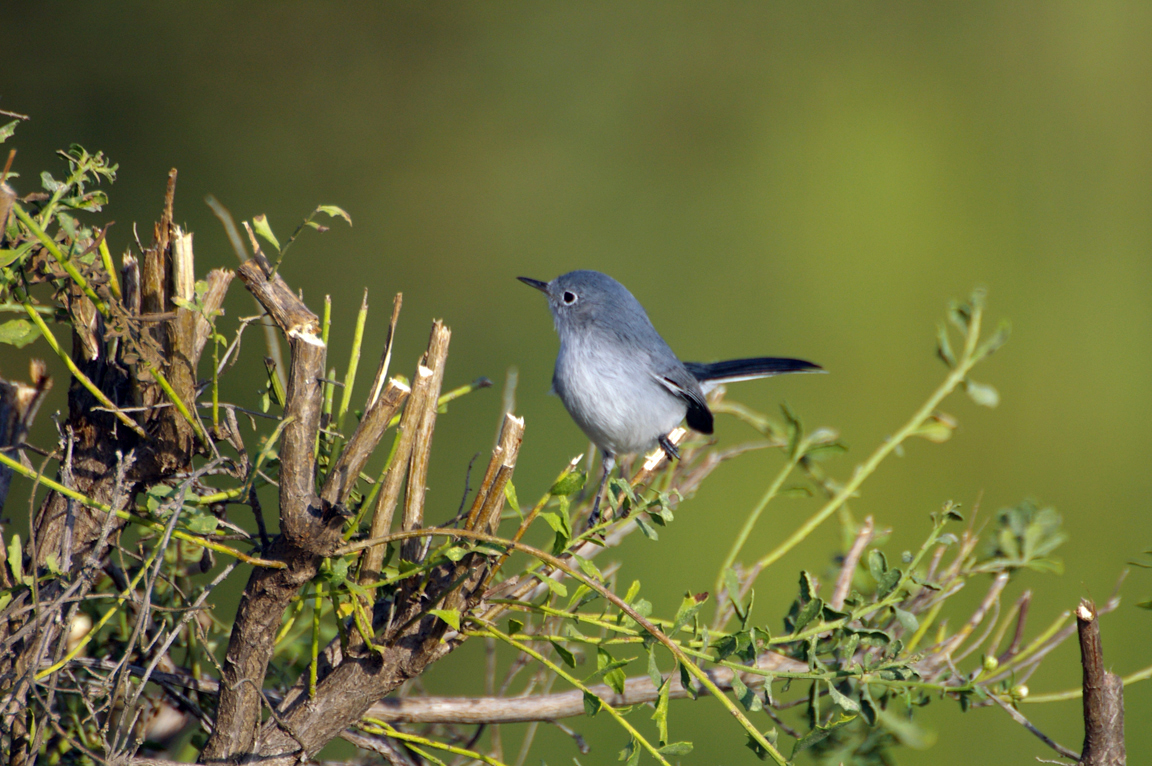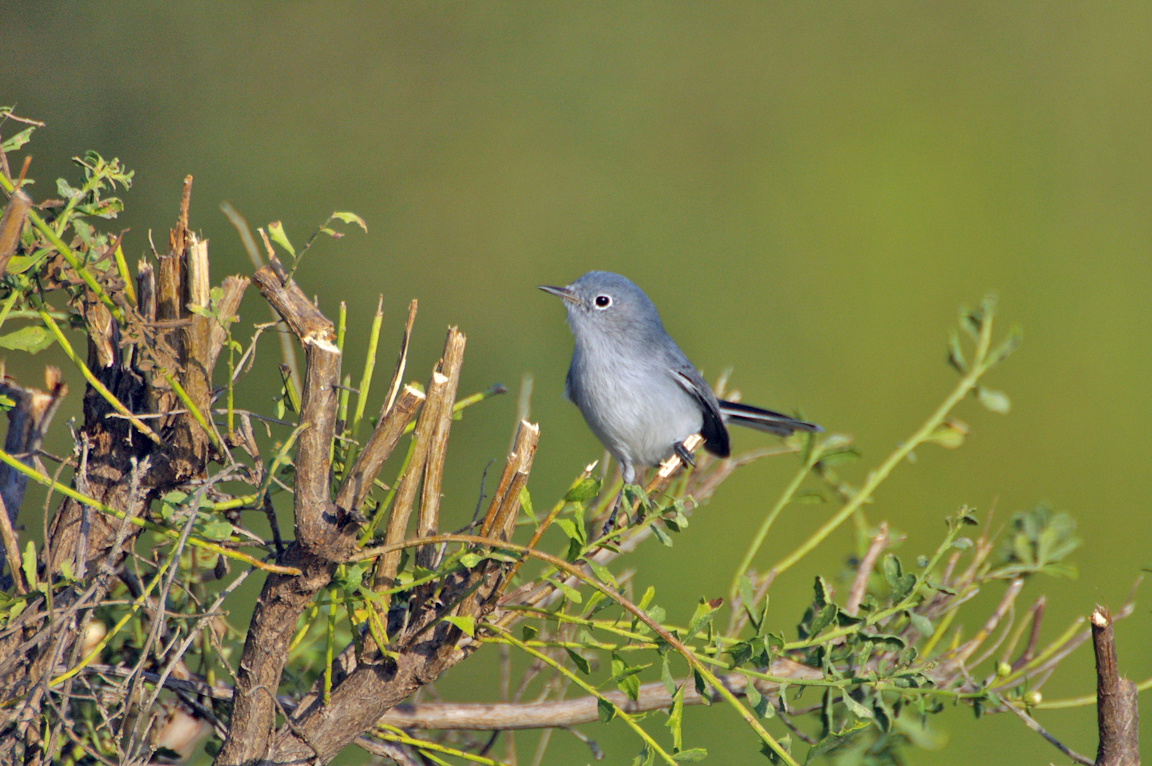|
|
|
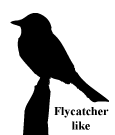 |
Blue-gray Gnatcatcher
|
| Polioptila caerulea | |
A tiny, long-tailed bird of deciduous forests and scrublands, the Blue-gray Gnatcatcher makes itself known by its soft but emphatic "spee" calls and its constant motion. By flicking its white-edged tail from side to side, the gnatcatcher may scare up hiding insects.
Interesting Information
-
The Blue-gray Gnatcatcher is the northernmost-occurring species of gnatcatcher, and the only truly migratory one. Most members of its genus are resident in the Neotropics.
-
The soft, rambling song of the Blue-gray Gnatcatcher usually contains some mimicked songs of other bird species.
Description
Adult Description
-
Tiny bird.
-
Long tail.
-
Bluish gray back.
-
White underside.
-
White eyering.
-
White outer tail feathers.
-
Small, thin bill.
-
No wingbars.
-
Length Range: 11 cm (4.25 in)
-
Weight: 6 g (0.2 oz)
-
Size: Very Small (3 - 5 in)
Sex Differences
Male Description
Breeding (Alternate) Plumage:
Black line
meeting over the bill and extending around head
above the eyes to just behind the eyes. Crown
and nape washed with bluish.
Nonbreeding (Basic)
Plumage: Crown and nape
medium gray. Face all medium gray.
Female
Description Face all gray,
with white eyering. Overall paler gray than
male. Immature Similar to
adult female, but wings slightly browner.
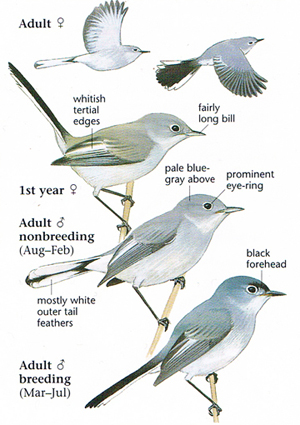
Photo taken from: The Sibley Field Guide by David Allen Sibley
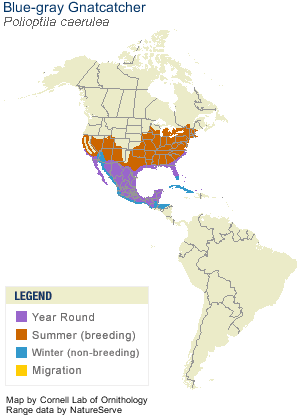
© 2003 Cornell Lab of Ornithology
|
Habitat |
|
Breeds in variety of deciduous wooded habitats from shrubland to mature forest, especially near water. |
|
Behavior |
|
Feeds near tips of branches, constantly moving through foliage. Moves tail continuously, which may flush insects. |
|
Food |
|
Small insects and spiders. |
Taxonomy
| Kingdom: | Animalia |
| Phylum: | Chordata |
| Subphylum: | Vertebrata |
| Class: | Aves |
| Order: | Passeriformes |
| Family: | Certhiidae |
| Genus: | Polioptila |
| Species: | Polioptila caerulea |
| Subspecies: | Polioptila caerulea amoenissima |
| Polioptila caerulea caerulea | |
| Polioptila caerulea obscura |
Similar Species |
|
|
Bird Sound |
|
Song soft, warbling, complex series of rambling jumbles. Call a thin, nasal "spee." |
|
Eggs look like this |
|
Photo taken from: ARCTOS Collaborative Collection Management Solution |
